August - December 2022
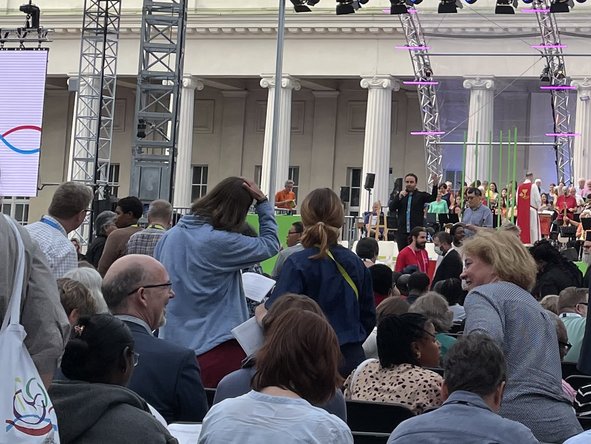
WCC 11th Assembly, 31 August – 8 September 2022
As helper and participant, I took part in a very important event in the city of Karlsruhe where I was born, where I grew up as a refugee child. Here, I went to school and was part of the North West Town, a suburb built by refugees mainly from people who had their roots in former Yugoslavia. It was both a pleasure and an honour to be host and fascilitator. As often as possible, I attended sessions and services. My task as helper was to drive people around. In the first days I fetched them from the main station, once even from Frankfurt airport.
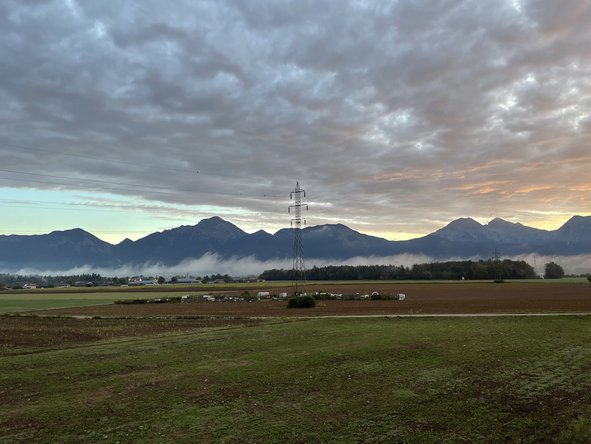
On the way to Belgrade
After the WCC Assembly in Karlsruhe, I went to my home in Furtwangen, where the Danube river has its source. I stopped over in the region of Ljubljana, Slovenia and arrived safely in Belgrade on Saturday, 10th of September. My first service was in the Protestant church of Zemun, Belgrade.
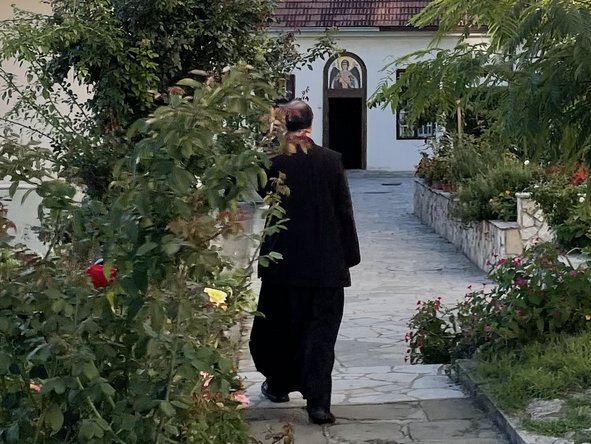
First impressions
First impressions in Belgrade. In the beginning, I went lost very often, took the wrong bus and so forth. But people are incredibly helpful and showed me the right way. The picture shows a peaceful monastery in the middle of the city. The monk gave me direction, so I found home soon.
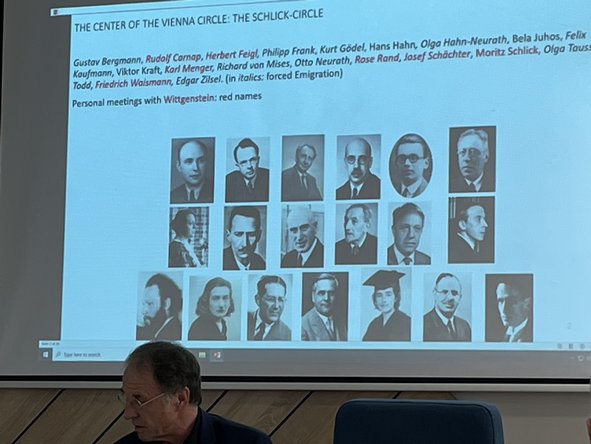
Exhibition about the Vienna Circle
On 15th of September 2022, the University of Vienna’s travelling exhibition about the Vienna Circle opened at the Faculty of Economics and Business at the University of Belgrade. It was a very interesting series of lectures on that day.
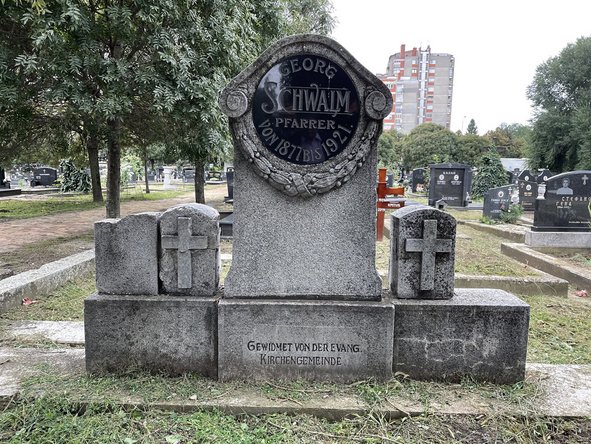
Pančevo - Kulpin - Bulkes
Early in the morning I started in Belgrade, drove to Pančevo. Somebody from the German “Landsmannschaft” had asked me to find out, whether the grave of the Danube-Suabian pastor and poet Georg von der Schwalm still can be visited there, on the German graveyard. His tombstone can be seen on the picture. I then drove to Kulpin, where my father, grandfather and great grandfather were born. After a short trip to Bulkes, where my forefathers arrived in the year 1785, I went back to Belgrade.
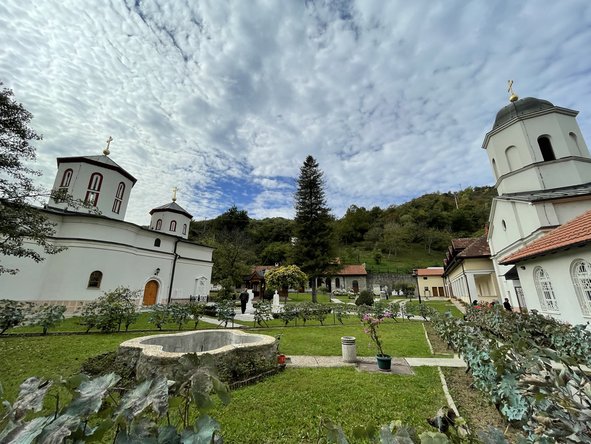
Monastery Rakovica
On 7 October, I bought some tools in a shop for handicrafts. I had seen that there is a monastery close by. So I drove there and was very warmly welcomed by a priest, he offered me coffee and brandy (Sljivovic). He lived in Munich and was fluent in German. It was very interesting to learn about the late Patriarch Pavle whose grave is in the garden of the monastery. Many people come to his grave to pray and to cry. He will soon be sanctified. It was a moving experience to witness how pious people of Serbia can be.
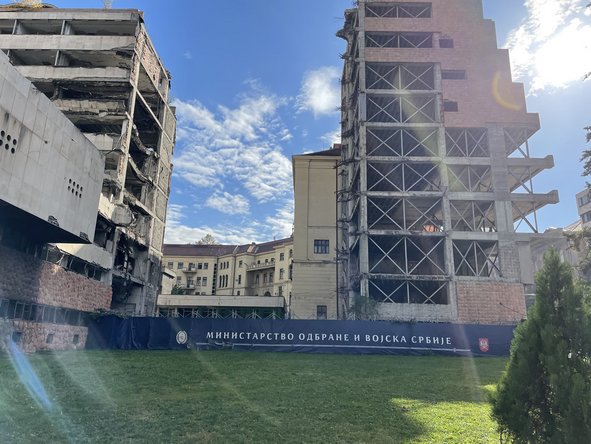
Walking through Belgrade
Walking through Belgrade is walking throughits history. On the picture one can see the memorial-like ruins of houses that were bombed in 1999 by NATO forces. The banner reads: “министарство одбране и војска србије”, meaning: “Ministry of Defense and the Army of Serbia”.
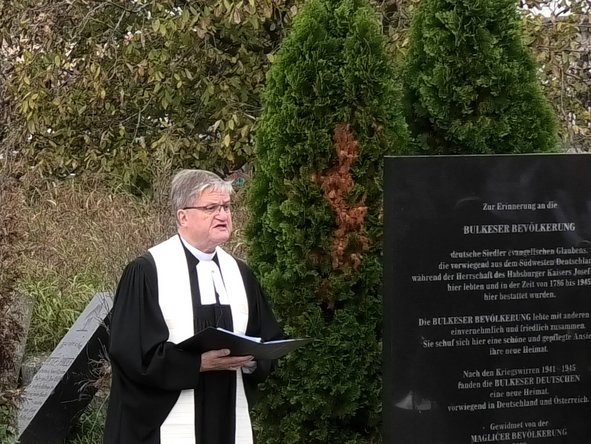
Ceremony on the memorial site in Bulkes
On 31st October there was a memorial ceremony near the graveyard in Bulkes (today: Bački Maglić). The protestant church was renovated from the outside. Partners from Kirchheim unter Teck came to celebrate the 200th anniversary of this church (due to Covid 19 with a little delay).
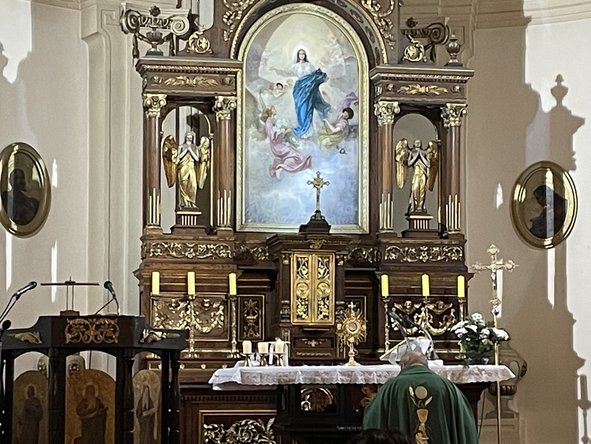
Roman Catholic Service in Zemun
Don Joso, the Roman Catholic priest of Zemun celebrated the Holy mass in his church in Zemun. We had a very friendly talks before and stay in touch.
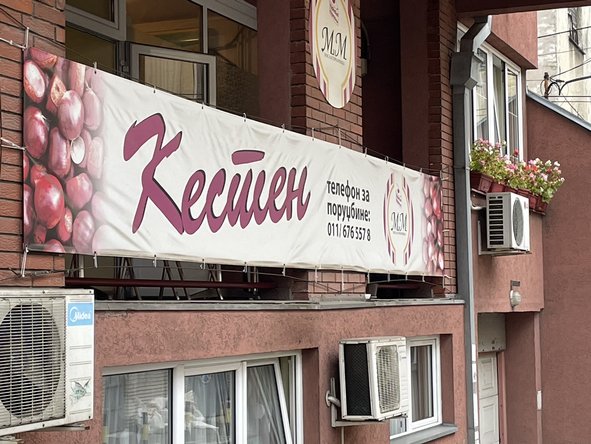
"Kesten"
In the Belgrade suburb Palilula is the protestant pastor's flat and office. In this house you can buy delicious sweets made of chestnuts. The Serbian name for chestnuts is “kesten” which stems from a German dialekt from Palatina. The picture shows the shop's advertising banner.
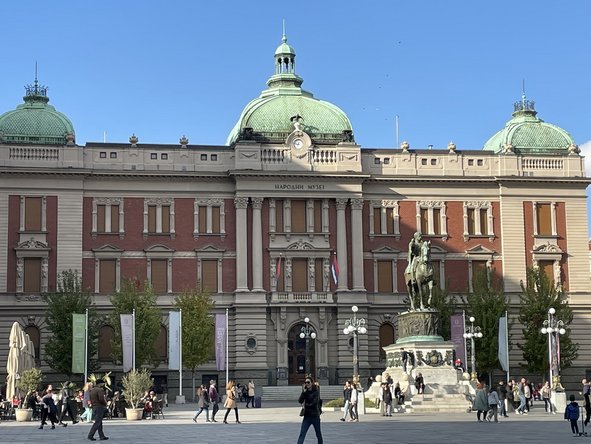
National Museum Belgrade
Tryying to help a family from Zemun who wants to honour one of their relatives, I came to know very friendly employees in the National Museum. They gave me precious hints for my further research which in the end was successful. On the picture we see the famous horse on the Republic square /"Trg Republike").
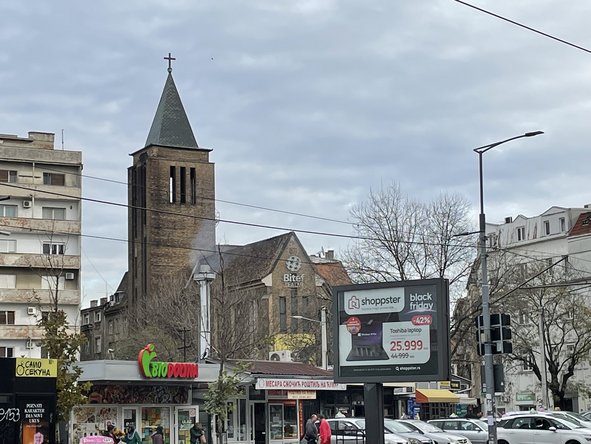
"Bitef" theatre in Skadarlija
The “Bitef” theatre was finished as Protestant church in the year 1944. A few prayer meetings were held there but the church was never consecrated. Until today the cross crowns the church tower. Built by the the famous German architect Otto Bartning it is until today one of several Belgrade theatres.
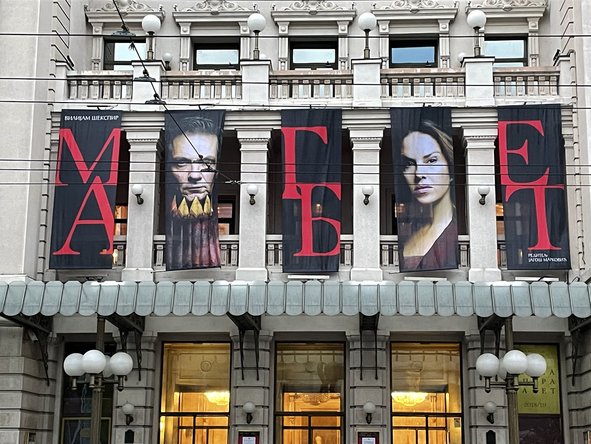
National theatre
The National theatre advertised Macbeth from William Shakespeare - in cyrillic it reads like this: “Вилјам Шекспир” (William Shakespeare): “Мегбет”.
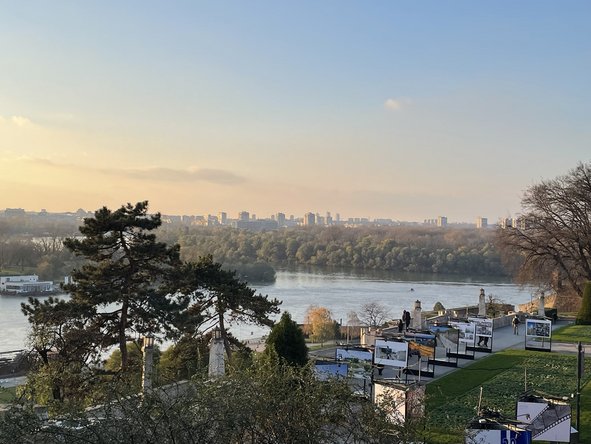
Kalemegdan
The Sava flows into the Danube: here we can see the confluence of the two mighty rivers from Kalemegdan.
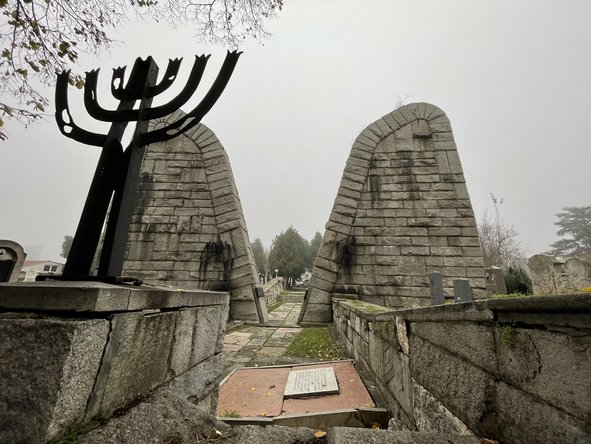
Jewish cemetaries
There are two Jewish graveyards close to the “New graveyard”. The bigger one is the Sephardic, the smaller one the Ashkenasic close to the New graveyard. The latter one is locked, the other one is open. On the picture we see the sculpture in honour of the victims of the shoah.
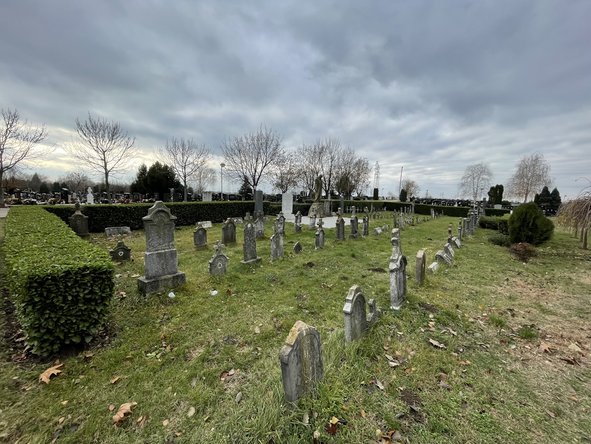
Excursion to the German graveyard
The small German graveyard in the heart of the huge cemetary in the suburb “Bežanijska kosa” once was in Zemun. In the 1950ies a hospital was built where the graveyard was. The tombstones were removed to private premises. From there it again was moved to the today's location.
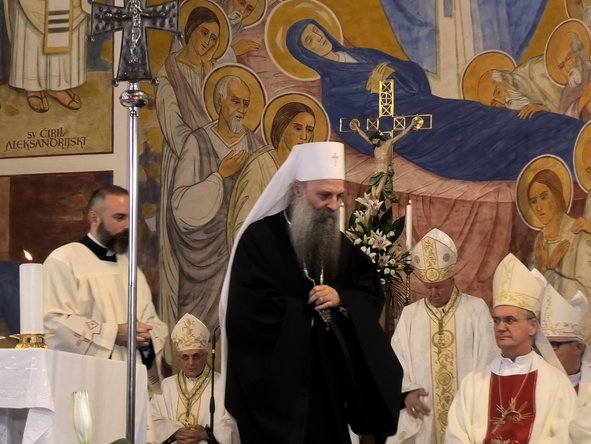
Investiture of Archbishop László Német SVD
On the picture we see in the foreground the Serbian orthodox Patriarch Porfirije during the investiture ceremony for the Roman catholic Archbishop László Német SVD. On his right hand side the new Archbishop is seated.
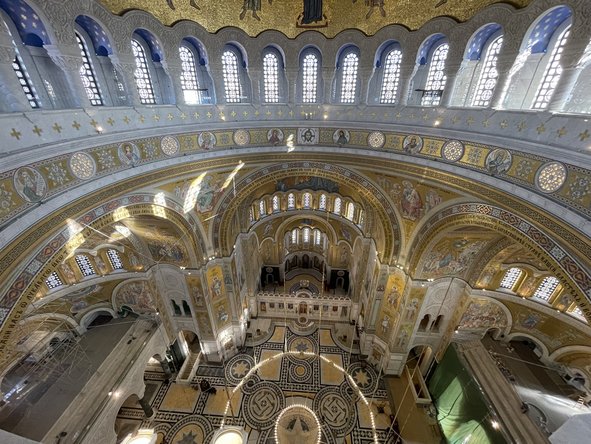
Serbian orthodox temple
In December a small group of church officials visited Belgrade in order to prepare the conference of German pastors in Novi Sad and in Belgrade in May 2023. During this preparation meeting we had the opportunity to visit the dome area from where this picture has been taken.
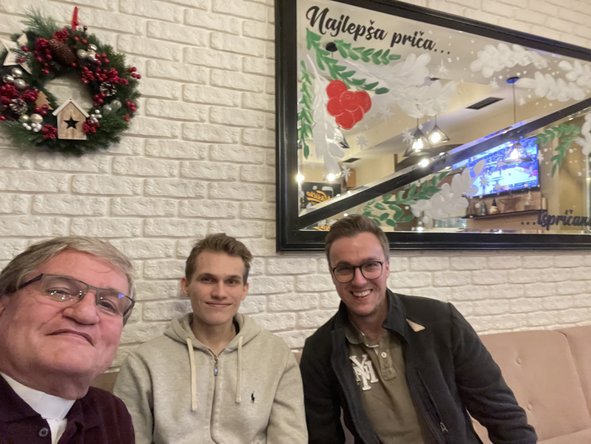
Christmas Eve in Zemun
After the service on Christmas Eve in Zemun Florian, Ivan and I celebrated our personal christmas in Zemun.

